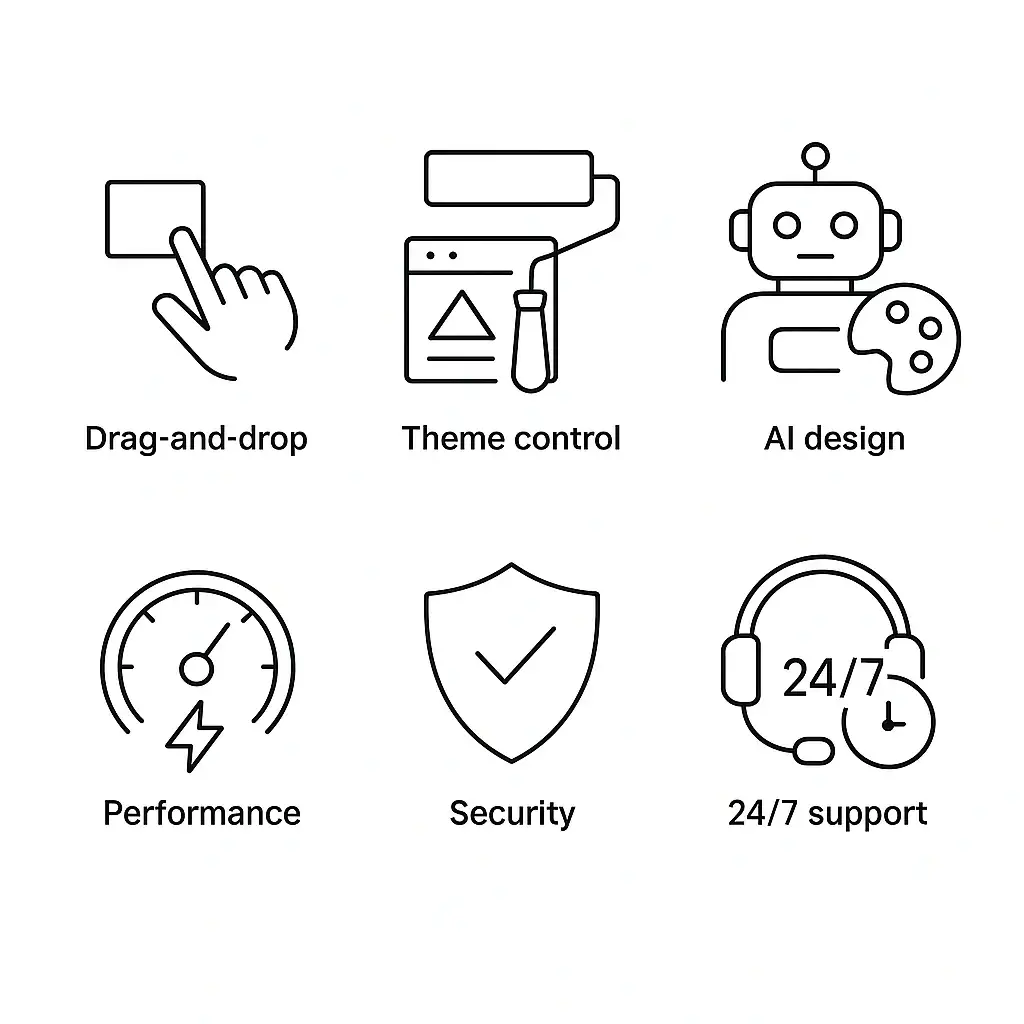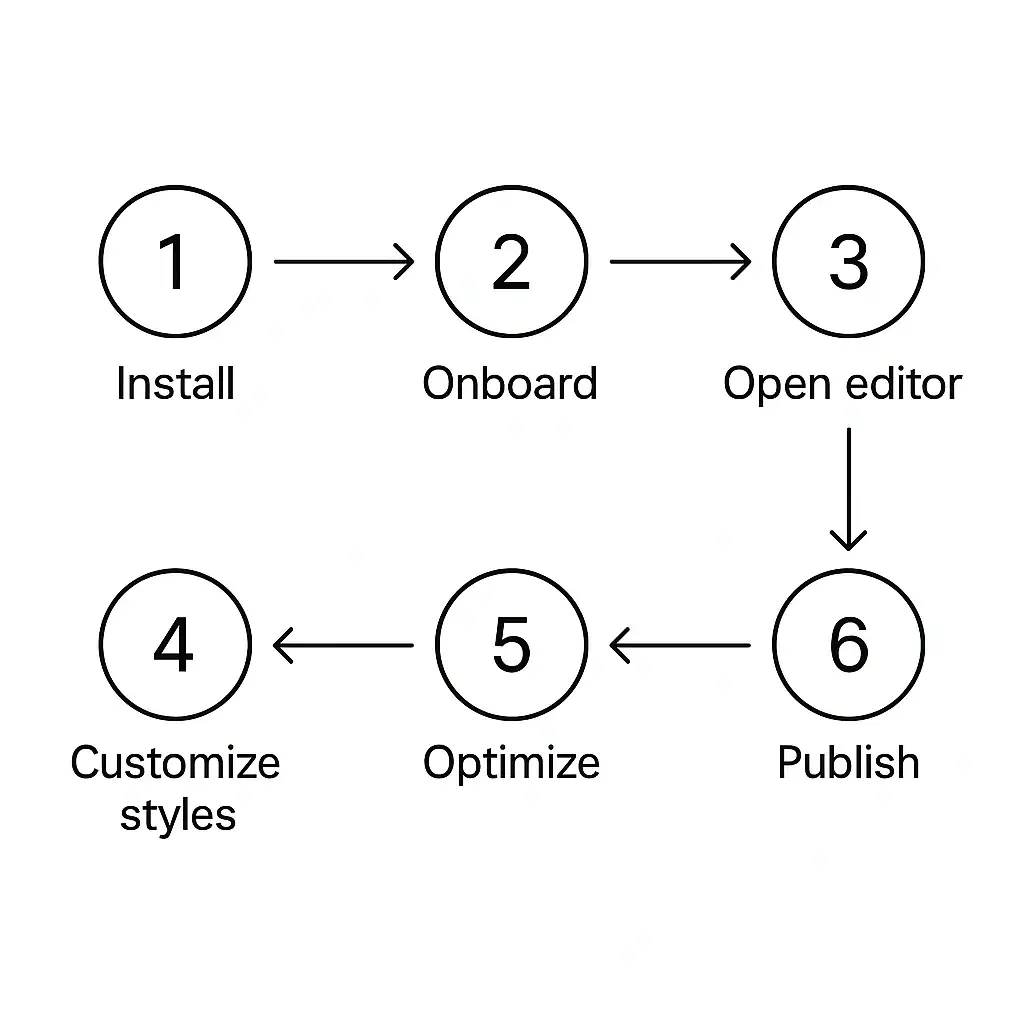We test and review software products using an independent, multipoint methodology. If you purchase something through our links, we may earn a commission. Read about our editorial process.
The most effective WordPress site builders in 2025 are a combination of AI design assistance, block editing, and performance capabilities, but their support, scalability, and pricing are dramatically different. Selecting a proper platform at the moment will determine the speed of loading your site, the scope of SEO, and the expenses of maintenance years ahead.
A WordPress site builder is a plugin or SaaS layer that allows you to create whole websites, including headers, footers, templates, and dynamic pages, using a visual drag-and-drop editor rather than editing PHP, CSS, or the built-in block editor. It packages theme management, responsive design and pre-built content blocks so that you can launch custom pages in real time.
Traditional page builders such as Visual Composer or the original TinyMCE based editors merely work within the main content area with you having to control themes, menus and widgets elsewhere. The patchwork of modern WordPress site builders substitutes full-site editing, centrally located style sheets, and performance optimization, and allows non-developers the liberty to influence every component of the site through one interface.

Real-time drag-and-drop visual editor — a sleek, block-based interface that allows you to organize the elements of content and the templates of the page without any coding.
Complete theme and template compatibility – the builder must be able to control headers, footers and custom pages but be compatible with modern WordPress themes and full-site editing.
AI design support - intelligent page layout, colour and copy suggestions, which make creating pages faster, and keep designs on-brand; a must-have with the best AI WordPress theme builders.
Built-in optimization of performance, clean code results, image compression, and Core Web Vitals optimization, your WordPress site loads quickly on any device.
Strong security and role management {bredhytroh Capitalization, user permission, and frequent updates to protect against the most common WordPress vulnerabilities.
Expert support 24/7 — chat or ticketing, and a knowledge base; essential when your site forms the core of a business.
Open, elastic prices — it is easy to understand the limits between free and premium versions, lifetime license availability, and no surprise costs as your site traffic increases.
Individual bloggers and content owners require a WordPress site builder that combines a simple drag and drop editor with pre-designed templates to enable the non-coder to get their content out without needing to learn HTML or CSS. The small and midsize companies are using the same tools to have fast marketing websites, stringent brand management, and integrated e‑commerce blocks.
Agencies appreciate multi-site dashboards, white-label, and role-based permissions to manage the work with clients at scale. Enterprises require enterprise‑level security, sophisticated integrations, and support with SLA to position the builder in line with complicated workflows and regulatory requirements.
First is ease of use: the finest WordPress site builders provide a real time drag and drop page builder that is user friendly on day one and not vendor locked in with regular WordPress blocks. Then time performance and SEO, clean HTML, in-built caching, and schema markup ought to increase Core Web Vitals without additional plugins.
Scalability and ecosystem is important when traffic increases. Seek out a theme builder that allows an unlimited number of sites, has an extensive portfolio of add-ons, and has an obvious licensing structure, one that is free yet functional to lifetime license, to keep costs predictable as you grow.

To activate the selected WordPress site builder plugin or SaaS connector, you will need to install it first in your dashboard.
To get theme files synced, starter templates imported, and AI design helpers turned on, run the onboarding wizard.
Click on a page or template; the default block editor is swapped out in real time by a drag and drop visual editor.
Personalize international styles and blocks- fonts, colors, headers, footers, forms, and WooCommerce items.
Optimize using inbuilt checks of Core Web Vitals, compression of images, and accessibility.
Publish; the developer generates clean HTML/CSS and delivers the live page in real time.
Time savings — The drag-and-drop editing and page templates allow you to go to live site in hours, instead of weeks.
Lowers development cost — a well-developed free version or an open premium version takes the place of custom development and third party design charges.
Maintains design uniformity - global theme builder manages the headers, footers and style sheets on all page builder layouts.
Increases marketing agility - marketers are now able to spin up landing pages, pop ups and custom fields in real-time without back and forth with a developer.
Performance and SEO — out of the box minified code, schema markup, and Core Web Vitals checks.
Growing scales - modular add-ons, lifetime license, and active installations all show that the builder can support small blogs and enterprise sites.
The selection of the most suitable WordPress site builder in 2025 boils down to the combination of the fundamental requirements and the functionality scope: independent developers are more concerned with an easy-to-use drag-and-drop interface and the decent free plan, whereas agencies and corporations need white-label options, user roles, and SLA-based support. Mapped traffic objectives with performance tools, theme and plugin compatibility and transparent pricing structures- then test a live demo to make sure the builder can provide speed, scalability and maintainability over the long term.
There is no universal platform that would suit all situations, yet Elementor Pro is the industry leader with 5 million and more active installations, advanced theme builder control, and the wide add‑on ecosystem. Divi (Elegant Themes) and Breakdance are close competitors since they also include full-site editing and AI-assistance in the design of agencies that require more control over branding.
The free version of Elementor has the largest widget set and template library available at no cost, with Brizy and Beaver Builder Lite being lighter drag-and-drop editors that are suitable to simple pages. Both retain essential speed and SEO functionality, meaning that you can start with a simple WordPress site and then upgrade.
Yes. Agencies and in-house departments regularly use WordPress with high-end builders like Beaver Builder, Thrive Architect, or Elementor Pro to accelerate the development process, impose a design system, and combine marketing stacks. The flexibility and the customer-oriented CMS makes WordPress to remain unrivalled in professional web design.
WPForms is a good compromise between the visual drag-and-drop form builder, pre-built templates, and spam protection, hence the most popular option on most websites. Gravity Forms is the enterprise choice of complex workflows, and free Contact Form 7 is still good enough in lightweight contact pages.